Kingdom of Khotan
Videos
Page
The Kingdom of Khotan was an ancient Buddhist Saka kingdom located on the branch of the Silk Road that ran along the southern edge of the Taklamakan Desert in the Tarim Basin. The ancient capital was originally sited to the west of modern-day Hotan at Yotkan. From the Han dynasty until at least the Tang dynasty it was known in Chinese as Yutian. This largely Buddhist kingdom existed for over a thousand years until it was conquered by the Muslim Kara-Khanid Khanate in 1006, during the Islamization and Turkicization of Xinjiang.

Manuscript in Khotanese from Dandan Oilik, NE of Khotan. Now held in the British Library.
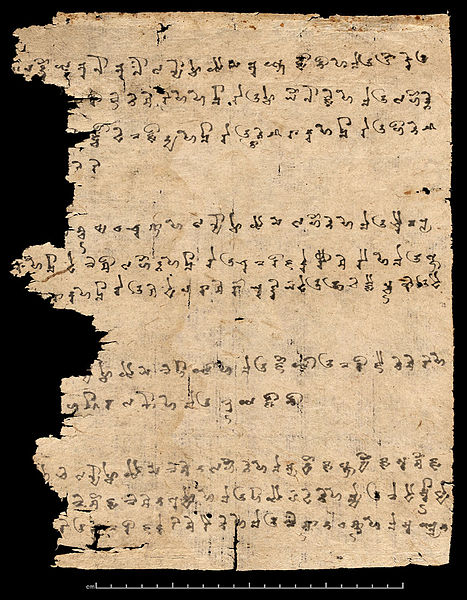
A document from Khotan written in Khotanese Saka, part of the Eastern Iranian branch of the Indo-European languages, listing the animals of the Chinese zodiac in the cycle of predictions for people born in that year; ink on paper, early 9th century
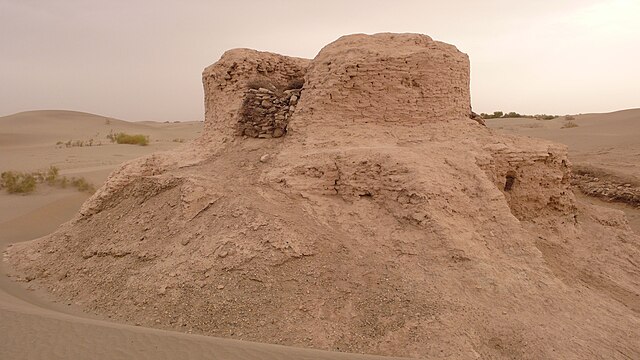
Ruins of the Rawak Stupa outside of Hotan, a Buddhist site dated from the late 3rd to 5th century AD.

Coin of Gurgamoya, king of Khotan. Khotan, 1st century AD. Obv: Kharosthi legend, "Of the great king of kings, king of Khotan, Gurgamoya. Rev: Chinese legend: "Twenty-four grain copper coin". British Museum
Saka
Videos
Page
The Saka were a group of nomadic Eastern Iranian peoples who historically inhabited the northern and eastern Eurasian Steppe and the Tarim Basin.

Cataphract-style parade armour of a Saka royal, also known as "The Golden Warrior", from the Issyk kurgan, a historical burial site near Almaty, Kazakhstan. Circa 400–200 BC.
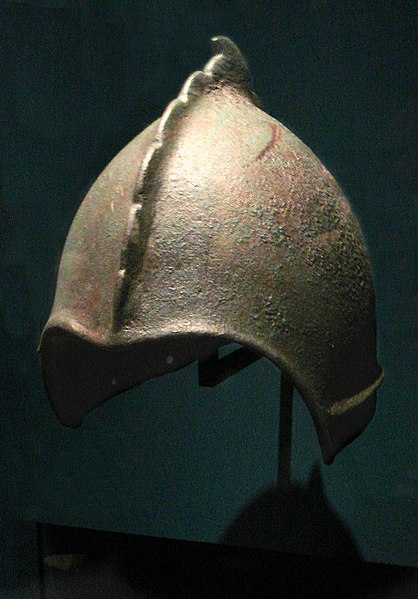
Scythian helmet, copper alloy, Afrasiyab, Samarkand, 6th–1st century BC.
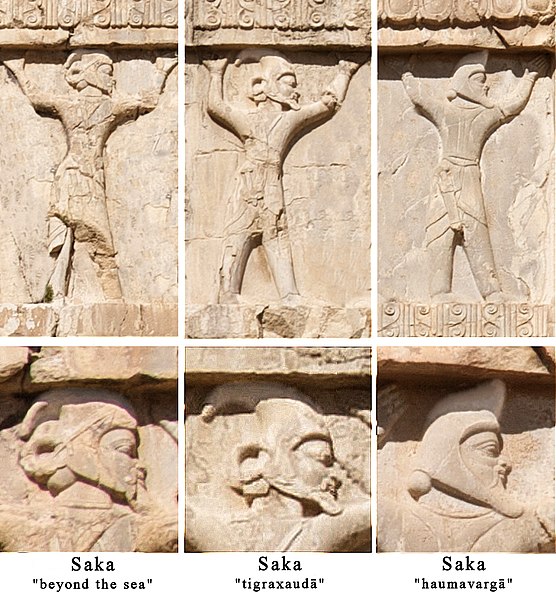
For the Achaemenids, there were three types of Sakas: the Sakā tayai paradraya ("beyond the sea", presumably between the Greeks and the Thracians on the Western side of the Black Sea), the Sakā Tigraxaudā (the Massagetae, "with pointed caps"), the Sakā haumavargā ("Hauma drinkers", furthest East). Soldiers of the Achaemenid army, Xerxes I tomb detail, circa 480 BC.
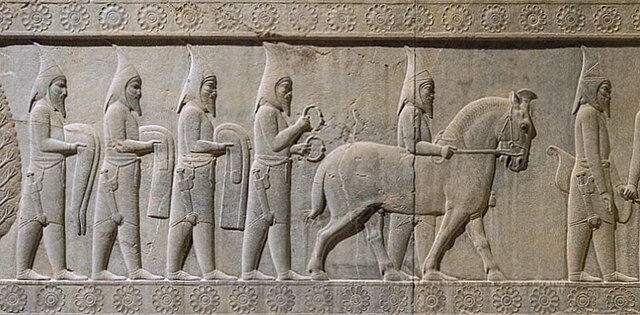
Sakā Tigraxaudā tribute bearers to the Achaemenid Empire, Apadana, Staircase 12.